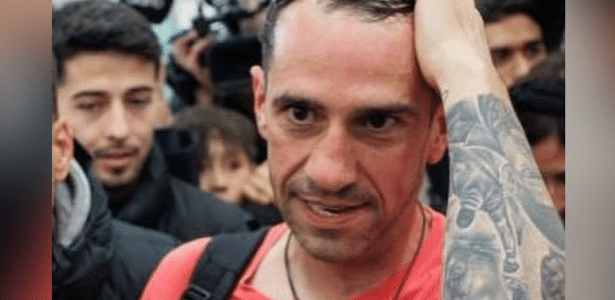“In the case of modeling, we need to invest in supercomputers and research. With budget cuts in the past five years, our modeling quality has been stymied from progress. This is a serious thing,” assesses Cope. “The other solution is to have a knowledge production approach, with analysis On site, which works with public data and open and shared science, which we can aggregate on platforms like AdaptaBrasil for broad use for decision makers, who do public administration. This is on the scientific side. On the other hand, management should be based on evidence, not on a performance scale with poorly trained servers in municipalities and states.”
Funded by MCTI, Pirata is one of the longest-running international cooperation projects in Brazil. For 25 years, data has been continuously generated using buoys that identify indicators such as ocean quality, current circulation and temperature. But the logistics of monitoring that should be in place, restricted to a Navy ship. In other words, the software is vulnerable to time-consuming maintenance of the ship and buoys. A high investment is also scary. “Today on the ship it costs R$200,000. So the embedded research is very expensive and that pretty much limits the potential of a lot of the research we could have in Brazil,” Cope notes.
Climate Awareness
The level of climate awareness of municipal managers in coastal areas is far below what is necessary, given the already tried extreme scenario, says Rodrigo Perbeto, Executive Director of South America at Iclei, a non-governmental organization that helps governments implement sustainable policies. “The issue of sea level rise is not as capturing the imagination and sense of reality as it should in coastal cities,” Perbetto says.
But Santos (SP) and Recife (PE) stand out as two exceptions, based on two components that lack national coverage: interdependence between levels of government and good use of international cooperation.
In 2015, the City of Santos established the Municipal Climate Change Adaptation Committee, formed by members and alternates from most of the secretariats, the Mayor’s Office and the General Secretariat of Government, as well as civil society. In 2016, she launched the Santos Municipal Climate Change Plan. The pioneering initiative in the country was the result of the Metrópole Project, funded by the Belmont Forum, and brought together some of the country’s leading scholars.
“This study analyzed sea-level rise due to coastal flooding, in 100-year recurring extremes, and the development of a resilience index within these municipalities,” notes Eduardo Hosokawa, deputy coordinator of the Climate Division. The change, linked to the Municipal Environment Department of Santos.
In early 2022, the municipality launched the Climate Action Plan (Pacs), an improvement on the previous document approved by the city council in June. The device was built with the support of the ProAdapta project, from the German Agency for International Cooperation (GIZ).
While the 2017 Agenda indicated priorities, the Pacific region sets short (to 2025), medium (2030) and long (2050) goals and indicators, divided into eight themes that address climate vulnerabilities and resilience efforts. Since 2018, it has been incorporated into the Master Plan, with the function of guiding public policies on housing, infrastructure and mobility and involving all departments.
“We need to connect the health, development and mobility system to the environment and make the city greenhouse gas-free by 2050. The Ministry of Environment needs to influence urban development and planning, by introducing new service, zoning or development, and ensuring the preservation of protected areas,” he says. Marcos Leporio, Minister of the Environment of Santos.
Most of the population of Santos (more than 430 thousand) lives on an area of \u200b\u200b39 square kilometers, on the island of São Vicente – human intervention practically isolates the soil of the region with water and intensifies heat waves. on the hill, The most vulnerable populations who occupy them are exposed to landslides and mass movements. The northwest region, located at sea level, experiences frequent floods and floods.
Ponta da Praia is at great risk from sea level rise. Combined with the spring tide, torrential rain and gusts of wind, the result illustrates the severity of the climate emergency. In 2016, strong waves swept the pier and devastated the Santos waterfront. Two years later, the municipality used a nature-based solution: geotagsLarge sandbags arranged along the beach to mitigate the impact of storms on urban infrastructure.
We concentrated the rain, which led to mass movements and landslides. “We don’t have droughts, but there is an increase in droughts,” says Hosokawa, of the Santos Department of Environment. “Sea level rise is a very important issue, with storm surges already having a noticeable impact on urban infrastructure and saltwater intrusion events, affecting urban drainage and inundating the entire pipeline along the length of the coast. And wind gusts – we now feel these cold fronts coming Much stronger, in a place already exposed to more exposure.”
Recife, in turn, started its climate policy with the support of a project funded by the European Commission called Urban LEDS. This initiative, which focused on the Global South, expired in 2022 and trained eight Brazilian cities. Thus, the capital of Pernambuco developed its own climate management tools, emissions inventory and governance with commitments signed, for example, with the Global Compact of Mayors for Climate and Energy, and the association with Iclei in 2015.
In 2019, Recife declared a climate emergency. In 2020, the municipality launched the Local Climate Action Plan, broken down into Mobility, Resilience, Sanitation and Energy, with actions for 2030, 2045 and 2050. In addition, the municipality should complete the Sector Adaptation Plan in August. Funded by the Global Environment Facility, it will cover simulations and solutions to problems such as floods and droughts, as well as their social, environmental and economic impacts.
Mitigation and adaptation measures are important in Recife, where 81.8% of the population lives within 30 meters of the coast. The municipality’s topographical characteristics already make it in a state of natural vulnerability, notes Carlos Ribeiro, Minister of Environment in Recife. “We are 60% of the plains and 40% of the hills. Some normal tides, without rain, are already leaving places in the plain in case the water returns from the manhole, from the sewage. On the hill, there is no need for a big loop for a crash to happen. ground,” continues the director. “This topographic and physical fragility has a real exacerbation of climate change, and this puts us in a very vulnerable situation. Since 2016, there has been a rise in the incidence of disaster episodes.”
In late May and early June, a severe incident with storms and floods killed 128 people, displaced 61,000 and left 9,000 homeless in the Recife metropolitan area. According to Ribeiro, the balance would be worse if it did not have a climate action plan. “Public authorities view this event as a consequence of climate change. Recife has adopted a policy to control these areas, for example, those in the hills, similar to resilience and the history of events,” he says.
According to the minister, the city government has implemented policies to control drainage, build stairs, and retain ramps on the hills. The alert system informs residents of the most important areas, with individual alerts on smartphones. In the event of disasters, like this year, not only civil defense is called, but the secretariats are called as well.
Housing programs move people living on stilts to the water’s edge – from the sea or rivers – and correspond to mangrove restoration projects. Other nature-based solutions include filtration gardens, to treat effluents, and linear gardens, to avoid reoccupation of risk areas.
For the municipality to effectively implement the climate agenda, Ribeiro sees the biggest challenges as managing public authorities and environmental education for the community. “Within our autonomy, what we do is transfer these programs into the municipality’s general network – from education, some routine work, city maintenance and cleaning, small sanitation and building programmes. For broad policy, for example, housing and education, the municipality alone cannot. We need federal and state support, as well as international cooperation.”

“Hardcore beer fanatic. Falls down a lot. Professional coffee fan. Music ninja.”





More Stories
China releases the most complete geological map of the Moon; look at the pictures
Registration is now open for the third cycle of the Science for All Prize
Sonaka workers win improvements to their health plan